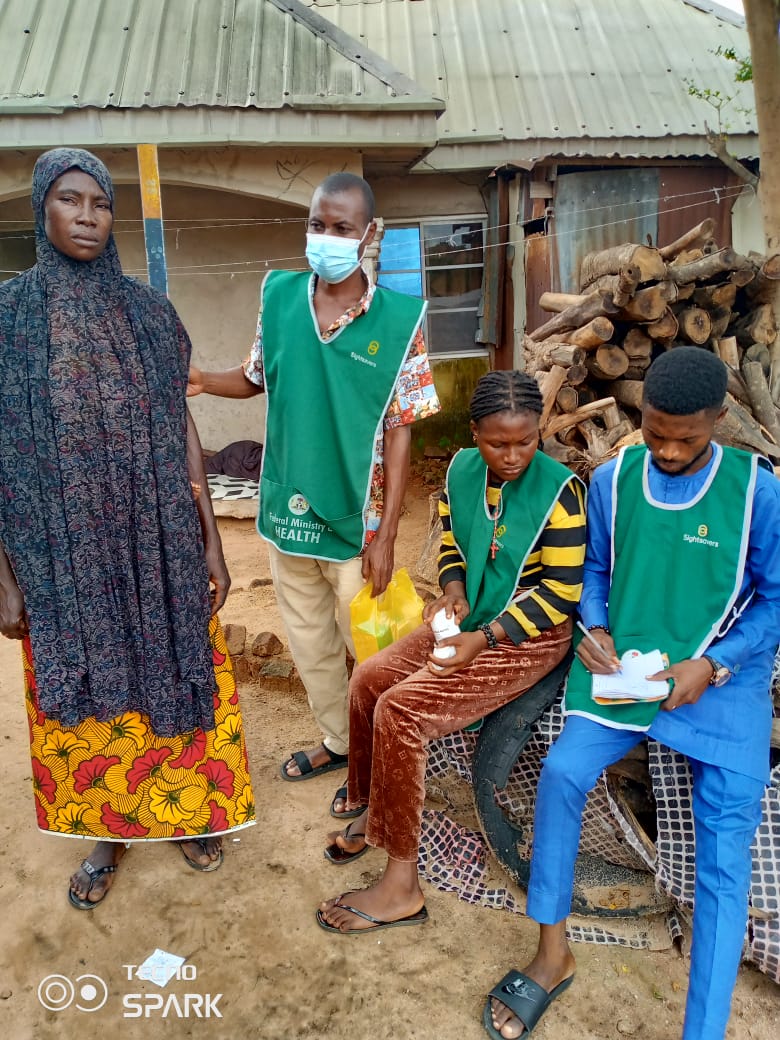Fighting Neglected Tropical Diseases: Mass Administration Drugs for Elimination of Lymphatic Filariasis and Soil Helminths  in North Bank 1 Council Ward, Makurdi LGA. October 7-19th 2024.
- November 30, -0001
- |
- by Admin

Neglected Tropical Diseases (NTDs) continue to impose a significant health burden on marginalized populations worldwide, affecting over one billion people. These diseases are particularly prevalent in Benue State, Nigeria, where ailments like onchocerciasis, lymphatic filariasis, schistosomiasis, soil-transmitted helminths, and trachoma remain endemic. Recognizing the urgency of combating these challenges, WOHEPI, in collaboration with SightSavers and the NTD Unit of the State Ministry of Health, undertook a mass administration of drugs (MADs) in North Bank 1 Council Ward, Makurdi Local Government Area.
The Initiative: A Community-Driven Approach
Between October 7 and 19, 2024, the project focused on administering Mectizan and Albendazole to control lymphatic filariasis and soil-transmitted helminths. Preparations began with an inception meeting held on September 26, 2024, to align strategies for effective community engagement and treatment. Supervisors, community health workers, and local leaders collaborated to ensure no one was left behind.
Community mobilization played a pivotal role, with advocacy visits conducted to secure support from nine community leaders. These leaders helped recruit 30 Community-Directed Distributors (CDDs) across nine targeted communities, including Angwan Jukun, Timber Shade, Isherev Layout, Court five, Veterinary, Kpege I & II, Agetashi, Gandy and Baka IDP Camp.
Training for Impact
Step-down training sessions were held on October 6, 2024, to equip CDDs and health workers with the necessary skills. Topics included an overview of lymphatic filariasis, drug administration protocols, and accurate data collection methods. The use of a dose pole to determine appropriate dosages ensured safe administration, especially for vulnerable groups.
Implementation and Results
Over 14 days, teams of three CDDs per community worked diligently under the guidance of supervisors. The campaign targeted individuals aged five years and above, with a particular focus on children and young adults. In total, 20,543 individuals were reached, comprising 9,414 males and 11,129 females. Communities such as Angwan Jukun, and Timber Shade recorded significant participation, underscoring the effectiveness of community engagement strategies.
Challenges and Lessons Learned
The campaign faced challenges typical of grassroots health initiatives, including logistical constraints and the need for meticulous data management. However, the collaborative spirit of all stakeholders, coupled with regular supervision, minimized errors and ensured comprehensive coverage.
The success of the drug distribution campaign in North Bank 1 Council Ward illustrates the transformative power of partnerships and community-driven strategies in combating NTDs. By reaching over 20,000 individuals, the initiative has significantly contributed to improving health outcomes and reducing the prevalence of lymphatic filariasis and soil-transmitted helminths in the region. As efforts continue, such initiatives serve as a model for scaling up interventions to eliminate NTDs nationwide
Search
Recent Projects
REPORT ON THE CELEBRATION OF...
June 15, 2025
